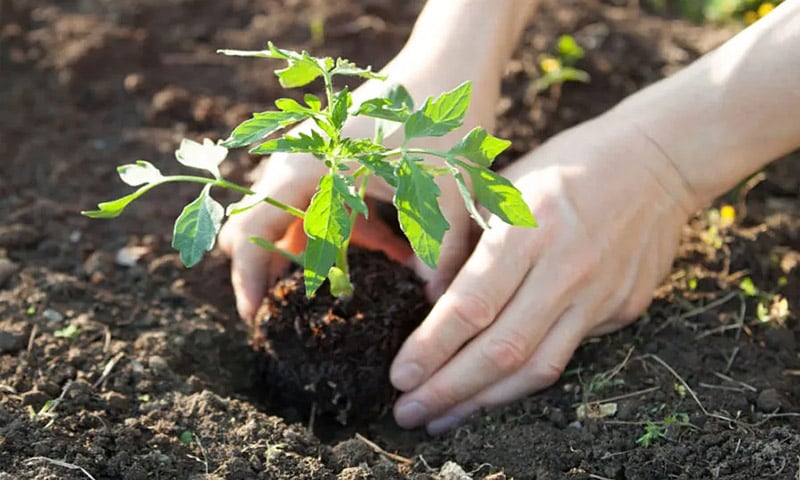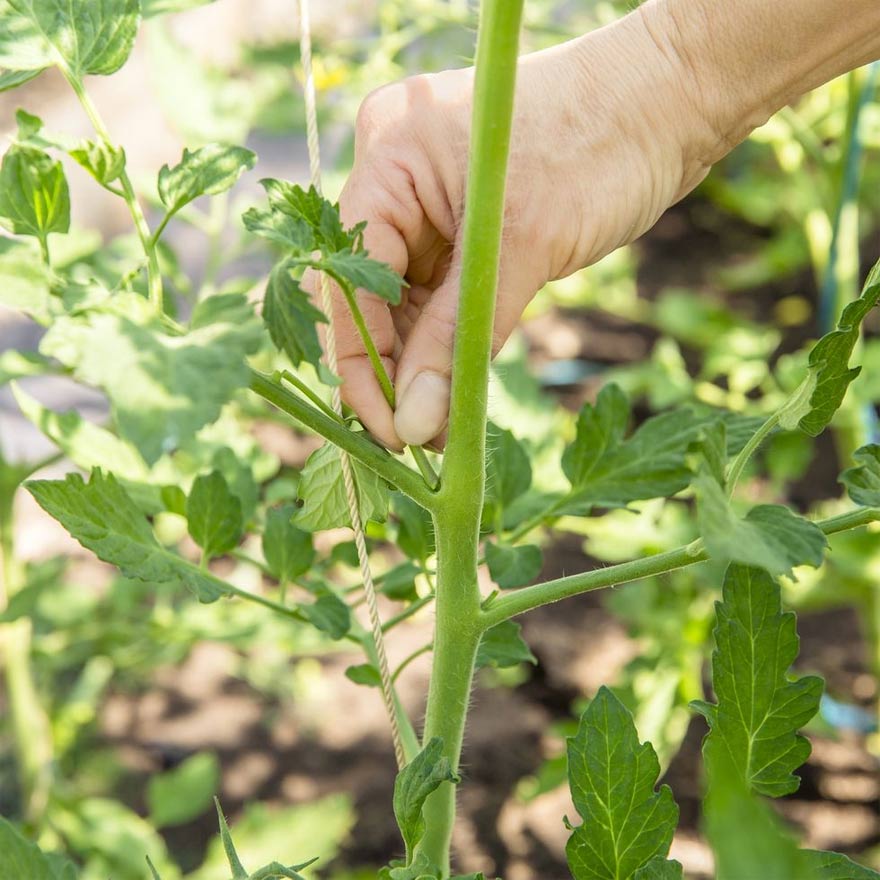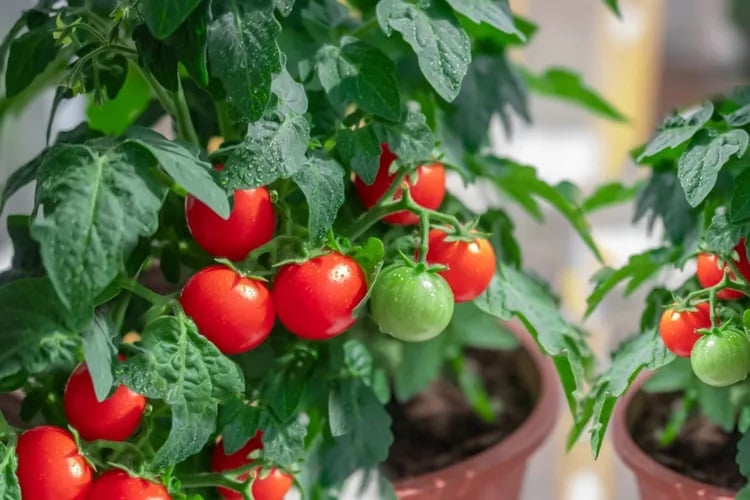Avoid these 7 mistakes for better tomato planting and higher yields:
1. Planting Tomatoes Too Early
The best time of year to plant tomatoes will depend on your climate and weather conditions.
For outdoor planting, night temperatures should consistently be above 15°C, with daytime temperatures ideally reaching 21°C or higher.
These seedlings are sensitive to frost and cold temperatures, so planting too early in the season could result in their demise or stunted growth.

2. Inadequate Nutrition
Don’t skimp on fertilizing your tomato plants. Especially as they start to fruit, your tomatoes need a consistent supply of nutrients to maintain productivity and healthy growth.
When first planting tomatoes, add a spoonful of organic fertilizer into the planting hole. As your tomato plant grows and fruits, apply fertilizer around the base of the plant every 3 to 4 weeks.
3. Neglecting to Prune
Pruning is essential for the overall health of your tomato plant. Failing to prune suckers (shoots that appear at the base of the main stem and side branches) and lower leaves can result in excessive foliage and reduced fruiting. Leaving suckers unattended can cause your tomato plant to become airy, thereby inviting pests and diseases.
Tomatoes are resilient; they can withstand significant pruning. Cut any leaves that come into direct contact with the soil, as they can transmit soil-borne diseases.
Don’t hesitate to snip off any excess branches your tomato plant produces. Each developing branch draws energy from the plant. So, if you want to redirect that energy into producing more fruit on existing branches, remove any new branches.

4. Inconsistent Watering
Tomato plants thrive in moist soil. Aim to provide 2 to 4 centimeters of water per week, increasing frequency during the peak of summer.
If you don’t trust yourself to water your garden consistently, consider installing a timed irrigation system to deliver the same amount of water each week without any hassle.
Keep in mind rainfall amounts and adjust your schedule accordingly, as overwatering can lead to root rot.
5. Crowding Plants
Tomato seedlings should be spaced 55 to 60 centimeters apart. Without proper spacing, tomato seedlings will lack adequate air circulation, increasing the risk of pest and disease issues. Crowded plants will also compete for sunlight, water, and nutrients.
6. Insufficient Support
Regardless of the tomato variety, your plants will need support—cages, stakes, or a more permanent structure like a trellis will do the trick.
Tomatoes have a habit of producing numerous branches to hold their fruit. Without proper support, the weight of the branches can become too much, causing them to sag or even break.
As your plant continues to grow throughout the season, you’ll need a tall and sturdy support system.

7. Improper Harvesting
Failing to harvest tomatoes at the right time can lead to splitting or rotting fruit, inviting unwanted insects and diseases into your garden.
You can harvest tomatoes when they are fully ripe or a few days earlier and let them ripen indoors.
8. Choosing the Wrong Variety
From heirloom to cherry tomatoes, these fruits come in various shapes and sizes. Consider the space you have and the type of plant you want to grow.
Be aware that bush varieties take up less space and are ideal for container gardening, but they typically produce fruit for only about two weeks. Indeterminate tomatoes, on the other hand, grow longer vines and tend to offer a more diverse flavor profile.

































